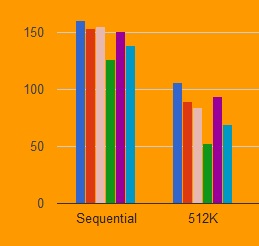

- #Renewal process theory sequential testing serial#
- #Renewal process theory sequential testing series#
Some applications of exponential ordered scores. An analysis of transformations (with discussion). Large sample sequential tests for composite hypotheses. The theory of a method of production scheduling when there are many products. Further results on tests of separate families of hypotheses. The Foundations of Statistical Inference. The use of control observations as an alternative to incomplete block designs. Inaugural Lecture, Birkbeck College, November 21. The role of statistical methods in science and technology. Berkeley: University of California Press, 105–123. In Pr o c eedings of the fourth Berkeley Symposium on Mathematical Statistics and Probability, 1, edited by L.M. Tests of separate families of hypotheses. Prediction by exponentially weighted moving averages and related methods. Design of experiments: The control of error. A simple congestion system with incomplete service.
#Renewal process theory sequential testing serial#
Serial sampling acceptance schemes derived from Bayes’s theorem (with discussion).

Regression analysis when there is prior information about supplementary variables. On the number of renewals in a random interval. A note on tests of homogeneity applied after sequential sampling. On a discriminatory problem connected with the works of Plato.

The analysis of exponentially distributed life-times with two types of failure. A renewal problem with bulk ordering of components. Two further applications of a model for binary regression. The regression analysis of binary sequences (with discussion). The interpretation of the effects of non-additivity in the Latin square. Some problems connected with statistical inference. On the distribution of Tribolium Confusum in a container. The use of a concomitant variable in selecting an experimental design. Some quick sign tests for trend in location and dispersion. The analysis of non-Markovian stochastic processes by the inclusion of supplementary variables.
#Renewal process theory sequential testing series#
Some statistical methods connected with series of events (with discussion). Les Cahiers du Bureaudes Temps Elementaires, 503-02, 3–20. Prevision de la production d’un groupe de machines surveillées par un exécutant (with discussion). A use of complex probabilities in the theory of stochastic processes. On the superposition of renewal processes. The mean and coefficient of variation range in small samples from non-normal populations. The design of an experiment in which certain treatment arrangements are inadmissible. Some statistical aspects of mixing and blending. A table for predicting the production from a group of machines under the care of one operative. Pr oc eedings of the International Congress of Mathematics, Amsterdam: North Holland, 284–285. A note on the formal use of complex probabilities in the theory of stochastic processes. The superposition of several strictly periodic sequences of events. Scandinavisk A ktuartidskrift, 36, 139–150. A direct proof a fundamental theorem of renewal theory. Some simple approximate tests for Poisson variates. Selected Government Research Re ports, 6, 19–30. The relationship between required test factors and strength variation. Selected Government Research Reports, 6, 189–200. Selected Government Research Reports, 6, 31–38. The relationship between required test factors and strength variation in the case of two types of failure. The interfibre pressure in slivers confined in rectangular grooves. Selected Government Research Reports, 6, 39–49. The effect of skewness of the frequency distribution on the relationship between required test factors and strength variation. Some recent work on systematic experimental designs. Sequential tests for composite hypotheses. A note on the sequential estimation of means. Some rheological properties of twistless combed wool slivers. The productivity of machines requiring attention at random intervals. Improved doubling methods in worsted drawing. Some causes of irregularity in worsted drawing and spinning (with discussion). The relation between strength and diameter of wool fibres. A n Outline of Statistical Methods for Use in the Textile Industry, Leeds: Wool Industries Research Association. The use of the correlogram in measuring yarn irregularity. Fibre movement in drafting (with discussion). A note on the asymptotic distribution of the range.


 0 kommentar(er)
0 kommentar(er)
